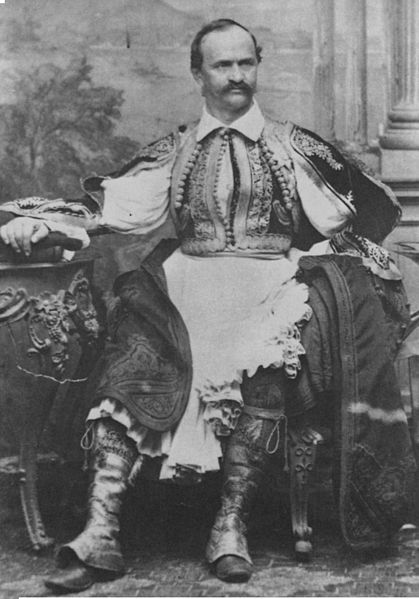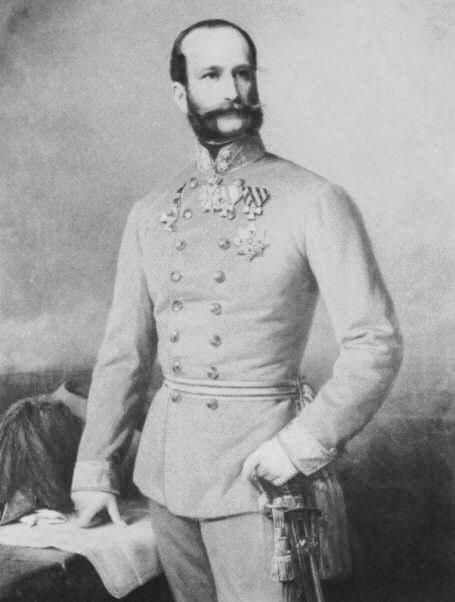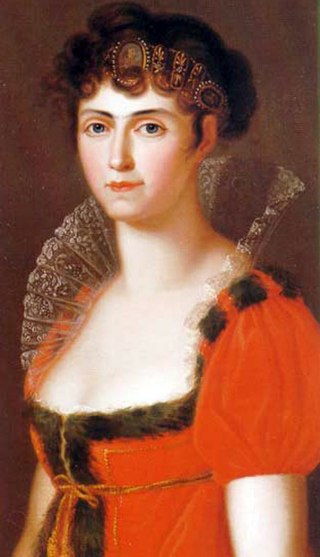by Susan Flantzer
© Unofficial Royalty 2013

Photo Credit – Wikipedia
Her Grand Ducal Highness Princess Elisabeth Alexandra Louise Alice of Hesse and by Rhine was born on November 1, 1864, in Bessungen, Darmstadt, Grand Duchy of Hesse and by Rhine, now in Hesse, Germany. Ella, as she was called by her family, was the second daughter and the second of the six children of Princess Alice of the United Kingdom (a daughter of Queen Victoria) and Ludwig IV, Grand Duke of Hesse and by Rhine, and also the sister of Empress Alexandra Feodorovna, wife of Nicholas II, Emperor of All Russia.

Ella in 1865; Photo Credit – Wikipedia
Ella had six siblings:
- Victoria of Hesse and by Rhine, Marchioness of Milford Haven (1863-1950), married Prince Louis of Battenberg, had two daughters and two sons
- Irene of Hesse and by Rhine, Princess of Prussia (1866-1953), married her first cousin Prince Heinrich of Prussia, had three sons
- Ernst Ludwig, Grand Duke of Hesse (1868-1937), married (1) his first cousin Princess Victoria Melita of Saxe-Coburg and Gotha, had one daughter, divorced (2) Princess Eleonore of Solms-Hohensolms-Lich, had two sons
- Prince Friedrich of Hesse and by Rhine (1870-1873), hemophiliac, died after a fall
- Alix of Hesse and by Rhine, Empress Alexandra Feodorovna of Russia (1872-1918), married Nicholas II, Emperor of All Russia, had four daughters and one son
- Princess Marie of Hesse and by Rhine (1874-1878), died from diphtheria

Ella’s family in 1876, two years before the death from diphtheria of Ella’s mother and sister May: Her brother Friedrich, who was a hemophiliac, had died in 1874 after a fall. The photo shows Ella’s father Ludwig holding May, Victoria at his side, Ernest and Irene at the front, Ella with her hand on Irene’s shoulder and leaning against her mother, and Ella’s mother Alice holding on to Alix (the future Empress Alexandra Feodorovna), Photo: Wikipedia
Ella and her siblings received a very strict education and were encouraged to be humble. They were brought up in a modest lifestyle for royalty, sweeping the floors and cleaning their own rooms, while their mother sewed clothes for her children. The children spoke English with their mother and German with their father.
Ella was 14 years old in 1878 when her mother died, following an outbreak of diphtheria in the family which also took the life of her youngest sister, four-year-old May. Ella had been sent away to her paternal grandmother’s home at the beginning of the outbreak and was the only member of her family to remain unaffected. Much of the next years were spent, along with her sisters, under the supervision of their grandmother, Queen Victoria. The Queen had taken a particular interest in the children following Alice’s death, overseeing almost every aspect of their lives.

Victoria, Ella, Irene, and Alix grieving for their mother, February 1879; Photo Credit – Wikipedia
Ella was charming and considered to be beautiful, so it is not surprising that she had a number of suitors. Her first cousin, the future Wilhelm II, German Emperor, proposed to Ella, but she turned him down. Another suitor who also got a “No” from Ella was Wilhelm’s first cousin, the future Friedrich II, Grand Duke of Baden, who was favored by Ella’s grandmother Queen Victoria.
The Hessian court had a special relationship with the Russian court since Ella’s great-aunt Marie of Hesse and by Rhine (Empress Maria Alexandrovna after her marriage) had married Alexander II, Emperor of All Russia. The Empress regularly visited her homeland and was usually accompanied by her two youngest sons, Grand Duke Sergei Alexandrovich and Grand Duke Paul Alexandrovich. Ella and Sergei, who was seven years older, got to know each other and eventually fell in love. Queen Victoria was strongly against the idea of marriage, primarily due to her strong distaste for all things Russian. Despite the misgivings of the two families, Sergei was intent on making Ella his bride. In 1883, during a visit to the Hessian family’s hunting lodge Schloss Wolfsgarten, Sergei proposed and Ella accepted. The engagement was announced publicly in February 1884 when Sergei was again visiting Darmstadt.

Ella and Sergei in 1884; Photo Credit – Wikipedia
The couple married on June 15, 1884, at the Winter Palace in St. Petersburg, Russia. As Ella had not yet converted to the Russian Orthodox religion, there were two ceremonies, one Lutheran and one Russian Orthodox. The wedding was attended by many royals from around Europe, with the noticeable exception of Queen Victoria. Instead, she was represented by two of her sons, The Prince of Wales, and Prince Alfred, Duke of Edinburgh who had married Sergei’s sister. After her marriage, Ella was known as Grand Duchess Elizabeth Feodorovna.

Ella in 1885; Photo Credit – Wikipedia
Following the wedding, the couple spent their honeymoon at Ilinskoye, Sergei’s country estate outside of Moscow, and then settled at the Sergeivsky Palace in St. Petersburg. In addition to these two homes, they also had a home on the grounds of Peterhof, and a house on the bank of the Moskva River. Serge and Ella did not have any children of their own. However, they later took in the children of Sergei’s brother Paul, Grand Duchess Maria Pavlovna (the younger), and Grand Duke Dmitri Pavlovich. The children’s mother had died in 1891 in childbirth, and they spent much time with Sergei and Ella. In 1902, when Paul entered into a morganatic marriage and was banished from Russia, he was not permitted to take the children, and they were formally put under the guardianship of Sergei and Ella.

Sergei with his foster children: Grand Duchess Maria Pavlovna and Grand Duke Dmitri Pavlovich; Photo Credit – Wikipedia
The couple were very close with Sergei’s brother, Alexander III, Emperor of All Russia, and his wife Empress Maria Feodorovna (born Princess Dagmar of Denmark), and were often asked to represent them at royal events elsewhere in the world. In 1887, they represented the Emperor at Queen Victoria’s Golden Jubilee, and the following year attended the consecration of the church of Saint Mary Magdalene in Jerusalem, which was built in memory of the brothers’ mother, the late Empress Maria Alexandrovna. In 1894, Ella’s youngest surviving sister Alix married Sergei’s nephew Nicholas II, Emperor of All Russia. Alix and Nicholas had first met at Ella and Sergei’s wedding.
In 1891, Alexander III appointed Serge Governor-General of Moscow, and in the following years was also appointed to the Imperial State Council and made Commander of the Moscow military district. Sergei’s nephew Nicholas became Emperor upon his father’s death in November 1894. Over the next 11 years, Sergei would become more and more disenchanted with the policies and decisions of his nephew. Finally, after massive losses in the Russo-Japanese War, Sergei resigned from his position as Governor-General on January 1, 1905.
On February 17, 1905, Grand Duke Sergei left the Nicholas Palace in Moscow in his carriage, en route to the Governor General’s mansion where he was in the process of clearing out his office. He had just come through one of the gate towers when an assassin threw a nitroglycerin bomb into the carriage from just a few feet away. The bomb landed in Sergei’s lap and exploded. The Grand Duke was killed instantly, his body literally blown to pieces. The assassin, Ivan Kalyayev, who was injured in the attack, was promptly arrested and later executed. Ella, having heard the blast from the Nicholas Palace, rushed to the scene and began to gather what was left of her husband’s body.
Four years after her husband’s assassination, Ella sold all her jewelry and with the proceeds opened the Convent of Saints Martha and Mary and became its abbess. A hospital, pharmacy, and orphanage were opened on the convent’s grounds, and Ella and her Russian Orthodox nuns spent their time serving the poor of Moscow.

Ella in her nun’s habit; Photo Credit – Wikipedia
After the Russian Revolution, Ella was arrested in 1918 by the Bolsheviks and was sent away to the Urals where she was later joined by five other Romanovs: Grand Duke Sergei Mikhailovich, three sons of Grand Duke Konstantin Konstantinovich: Prince Ioann Konstantinovich, Prince Konstantin Konstantinovich, Prince Igor Konstantinovich, and a son of Grand Duke Paul Alexandrovich: Prince Vladimir Pavlovich Paley. Also in the group were Varvara Yakovleva, a nun from Ella’s convent, and Feodor Remez, Grand Duke Sergei Mikhailovich’s secretary. On May 20, 1918, they were all taken to Alapaevsk where they were kept in the Napolnaya School.
On July 18, 1918, the day after the shooting of Emperor Nicholas II and his family, Ella and all of the people with her were thrown down a mineshaft near Alapayevsk by the Bolsheviks. All except Grand Duke Sergei Mikhailovich survived the fall. Hand grenades were thrown down after them killing Grand Duke Sergei Mikhailovich’s secretary, Feodor Remez. According to the personal account of Vassili Ryabov, one of the killers, the singing of hymns was heard after the grenade explosions. Ryabov threw another grenade into the mine shaft, but the singing continued. Finally, wood and brush were set on fire and thrown into the mine shaft.
Romanovs killed with Grand Duchess Elizabeth Feodorovna who was 53 years old when she died; All photos from Wikipedia

Prince Ioann Konstantinovich, 32 years old, son of Grand Duke Konstantine Konstantinovich who was a grandson of Emperor Nicholas I. photo: Wikipedia
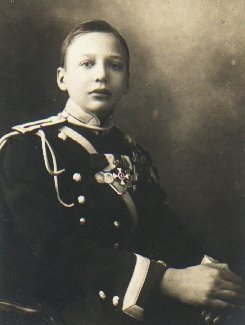
Prince Igor Konstantinovich, 24 years old, son of Grand Duke Konstantine Konstantinovich who was a grandson of Emperor Nicholas I. photo: Wikipedia
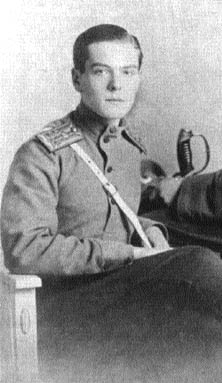
Prince Vladimir Paley, 21 years old, son of Grand Duke Paul Alexandrovich, a son of Emperor Alexander II. photo: Wikipedia
Three months later, White Army soldiers found the remains of the victims. Ella’s remains eventually were interred at the St. Mary Magdalene Convent on the Mount of Olives in Jerusalem along with the remains of her fellow nun Varvara Yakovleva. Princess Alice of Battenberg, the mother of Prince Philip, Duke of Edinburgh, and the niece of Ella, asked to be buried with her aunt. Princess Alice had founded a nursing order of Greek Orthodox nuns, the Christian Sisterhood of Martha and Mary, which was modeled after her aunt’s order of nuns. When Princess Alice died in 1969, she was interred at St George’s Chapel, Windsor Castle, but her remains were transferred to St. Mary Magdalene Convent in 1988.

Tomb of Grand Duchess Elizabeth Feodorovna; Photo Credit – Автор: Deror Avi – собственная работа, CC BY-SA 3.0, https://commons.wikimedia.org/w/index.php?curid=6527236
Ella was canonized as a saint by the Russian Orthodox Church Outside of Russia in 1981, and in 1992 by the Moscow Patriarchate as New Martyr Elizabeth. She is one of the ten 20th-century martyrs depicted in statues above the Great West Door of Westminster Abbey in London, England. Ella’s convent was closed in 1920 during the Soviet regime, but the convent was re-opened in 1994 and the sisters there continue doing the work Ella started.

Statue of Elizabeth (far left) and other martyrs of the 20th century at Westminster Abbey in London; Photo Credit – Wikipedia
This article is the intellectual property of Unofficial Royalty and is NOT TO BE COPIED, EDITED, OR POSTED IN ANY FORM ON ANOTHER WEBSITE under any circumstances. It is permissible to use a link that directs to Unofficial Royalty.
Recommended Books
- Elizabeth, Grand Duchess of Russia – Hugo Mager
- The Life and Death of Ella, Grand Duchess of Russia: A Romanov Tragedy – Christopher Warwick




